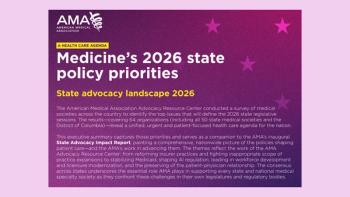
RAND releases analysis of healthcare reform scenarios
The recently enacted federal healthcare reform law provides health insurance coverage to the largest number of Americans while keeping federal costs as low as reasonably possible, according to an analysis.
The recently enacted federal healthcare reform law provides health insurance coverage to the largest number of Americans while keeping federal costs as low as reasonably possible, according to an analysis from the RAND Corporation. The only alternatives that would have covered more Americans at a lower cost to the federal government were all politically untenable-substantially higher penalties for those who don't comply with mandates, lower government subsidies, and less generous Medicaid expansion, according to the study. Researchers simulated more than 2,000 policy scenarios to provide independent analysis of different reform proposals' potential impact.
Newsletter
Stay informed and empowered with Medical Economics enewsletter, delivering expert insights, financial strategies, practice management tips and technology trends — tailored for today’s physicians.








